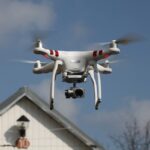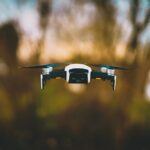Drones have become increasingly popular tools for capturing stunning aerial footage. From breathtaking landscapes to action-packed scenes, the possibilities are endless when it comes to drone videography. However, capturing great footage is just the first step in creating a compelling video. Editing is key to taking your drone footage to the next level. Here are five must-know tips for enhancing your drone footage with editing techniques.
1. Color grading: One of the most important aspects of editing drone footage is color grading. This process involves adjusting the colors and tones of your footage to create a cohesive look and feel. By adjusting the contrast, saturation, and color balance of your footage, you can enhance the overall look and bring out the true beauty of the scene. Experiment with different color grading techniques to find the perfect look for your video.
2. Stabilization: Drone footage can often be shaky and unstable due to wind conditions or other factors. Stabilizing your footage is crucial to creating smooth and professional-looking videos. Most editing software programs offer tools for stabilizing footage, such as warp stabilizer in Adobe Premiere Pro or smoothcam in Final Cut Pro. By using these tools, you can eliminate unwanted camera shakes and create a more polished final product.
3. Speed ramping: Speed ramping is a technique that involves speeding up or slowing down footage to create dynamic and engaging visuals. By incorporating speed ramping into your drone footage, you can add energy and excitement to your videos. For example, speeding up footage during action-packed moments or slowing down footage for dramatic effect can elevate the overall viewing experience. Experiment with different speed ramping techniques to add flair to your drone footage.
4. Adding music: Music can greatly enhance the mood and emotion of your drone footage. When editing your videos, consider adding music that complements the visuals and enhances the overall narrative. Choose a soundtrack that fits the tone of your video, whether it’s upbeat and energetic or calm and serene. Pay attention to the tempo and rhythm of the music to create a seamless and engaging viewing experience for your audience.
5. Transitions and effects: Incorporating transitions and effects can add visual interest and creativity to your drone footage. Experiment with different transitions, such as fades, wipes, or zooms, to seamlessly blend different shots together. Additionally, consider using effects like color correction, overlays, or text to add a unique touch to your videos. By incorporating creative transitions and effects, you can elevate the production value of your drone footage and create a captivating viewing experience for your audience.
In conclusion, editing is a crucial step in enhancing your drone footage and creating compelling videos. By mastering color grading, stabilization, speed ramping, music selection, and transitions and effects, you can take your drone videography to the next level. Experiment with different editing techniques to find your unique style and create visually stunning videos that leave a lasting impression. With practice and creativity, you can unleash the full potential of your drone footage and create videos that truly stand out.





